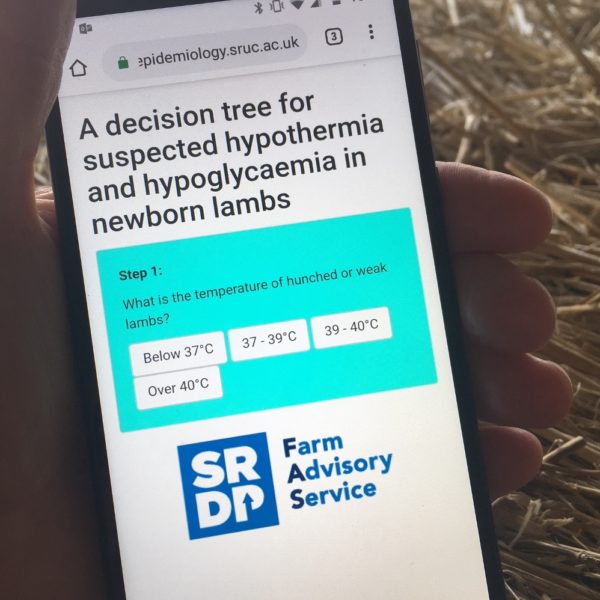Treating hypothermia in newborn lambs
About Hypothermia
Hypothermia is a common cause of lamb deaths. If there are any concerns at all, take the lamb's temperature. The normal temperature for a lamb is 39°C.
If the lamb is between 37°C and 39°C and able to swallow then it should be fed warm colostrum by stomach tube and then returned to its mother in a warm bedded pen with no draughts.
If the lamb is below 37°C and able to swallow then it should be warmed, using a heat box to 37°C before being fed and returned to its mother.
If the lamb is below 37°C and
- Is under five to six hours old it will have brown fat “adipose” to provide energy,
- Is over five to six hours old, it is likely it is unable to swallow. Once the lamb is over five to six hours old its reserves will have gone and the lamb would burn muscle and produce ketones which can have a detrimental effect on the lamb. In this scenario an injection of warmed glucose can be given straight into the abdomen of the lamb, this is called intraperitoneal glucose. This should be injected using a sterilised needle, 1 inch below the navel and ½ inch to the side of the navel, with the needles pointed towards the lamb’s tail head (10ml/kg body weight). It is a good idea to ask your vet for a refresher of this process.
Ideally colostrum should be from a ewe in the flock. Lambs should receive 50ml/kg of liveweight colostrum in the first few hours of birth and by the time the lamb is 24 hours old it should have received 200ml/kg. Beware if heating or thawing frozen supplies so you do not denature the protein based immunoglobulins with extreme heats. As a guide if the water is too hot for your hand then it is too hot for colostrum. It should be heated to 39°C. If feeding ewe's milk through a tube or teat you may need to mix with warm water to ensure it easily flows through the duct. Cow colostrum is often available from dairies but it is not as concentrated as ewe colostrum, the quantity fed should be increased by approximately 30% to ensure for adequate antibodies. Johne’s can be transmitted through milk, so ensure the colostrum is sourced from a Johne’s free herd.
Hypothermia Decision Tool
To treat hypothermia successfully in lambs it’s important to take the correct steps, which vary depending on the lamb’s age and temperature. A digital thermometer is inexpensive and can be used to help guide decision-making. Our hypothermia decision tool asks a series of questions which will give you a quick answer as to which treatment is best. It works on a mobile, so save the link to your phone for use in the field or shed.
For very cold, older lambs, the best treatment may be an intra-peritoneal (IP) injection. Giving an IP injection can be daunting, but is a simple method to prevent deaths. In the video below, we demonstrate giving the injection into the abdomen of a lamb. The video also contains instructions on making up the correct glucose solution.

If you need advice with this or any other topic, phone our advice line on 0300 323 0161, email advice@fas.scot or explore this website in more detail.
Sign up to the FAS newsletter
Receive updates on news, events and publications from Scotland’s Farm Advisory Service
